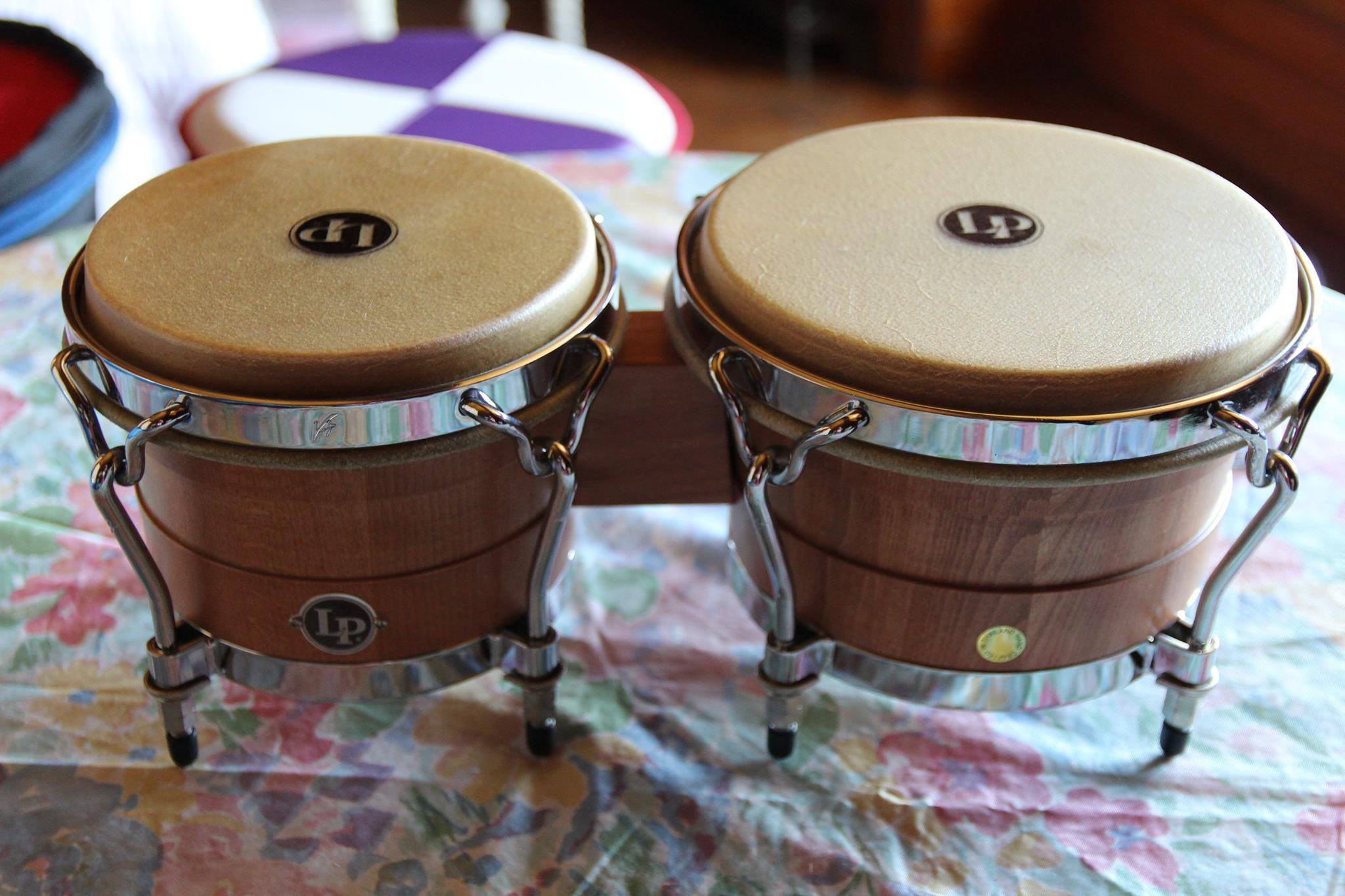Over the years, many people have reached out to me seeking to learn how to play bongo drums. However, most of them lack a solid grasp of the basics of playing congas and often don’t realize they need to learn conga drums and clave first. Although bongos are traditional solo instruments in Latin band forms, starting with the conga drum is crucial for building a strong musical foundation.
Here’s my advice you want to learn bongo: seriously consider beginning with the conga drum. It’s important to get comfortable with the essentials, rudiments, and overall technique before diving into the more advanced bongos. The clave is the heartbeat of all Afro-Cuban rhythms, and understanding it will help significantly when you transition to playing bongos.
I have never met a great bongo player who started out on bongo and only played bongo without learning congas or other percussion. You need to be well rounded and learn everything else about the music and drumming system first and this includes the bell patterns as well.
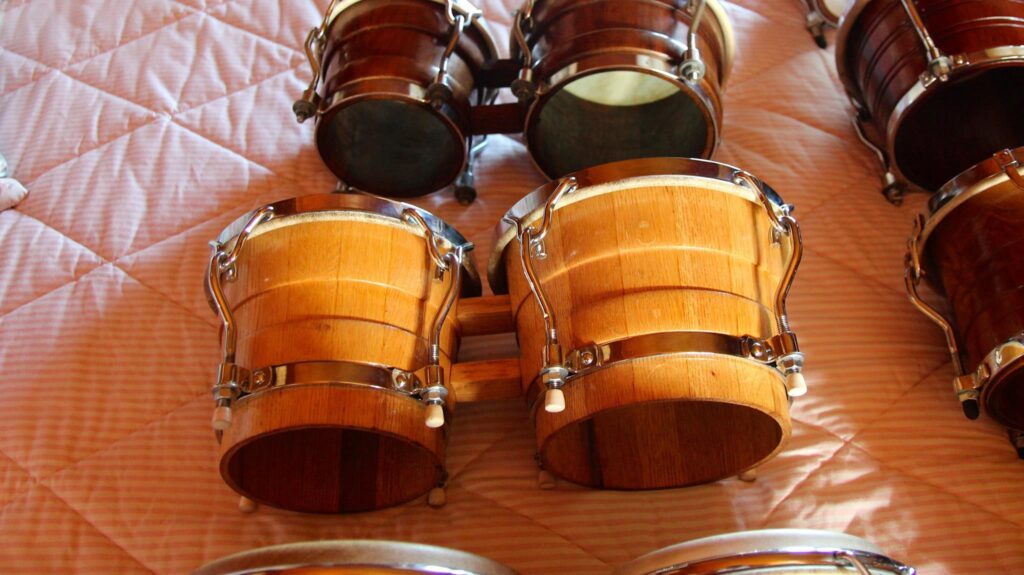
Valje Concert Series Bongo
In my opinion, out of all the many Valje bongos made throughout the years, these are the best and most unique sounding. Very “full” deep tonality. If you can find these anywhere grab ’em!
They have longer shells and a unique bridge as well. Made from oak wood back in the day, considered as vintage now.
And of course, if you are going to play in a band then you need to understand where your parts fit in. And about the music you are going to play with. A bongo player in a salsa type of band switches back and forth between bell and bongo for example, so you need to know when to do this. It can be annoying when someone keeps picking up and putting down percussion in the wrong parts of a piece in any type of music.
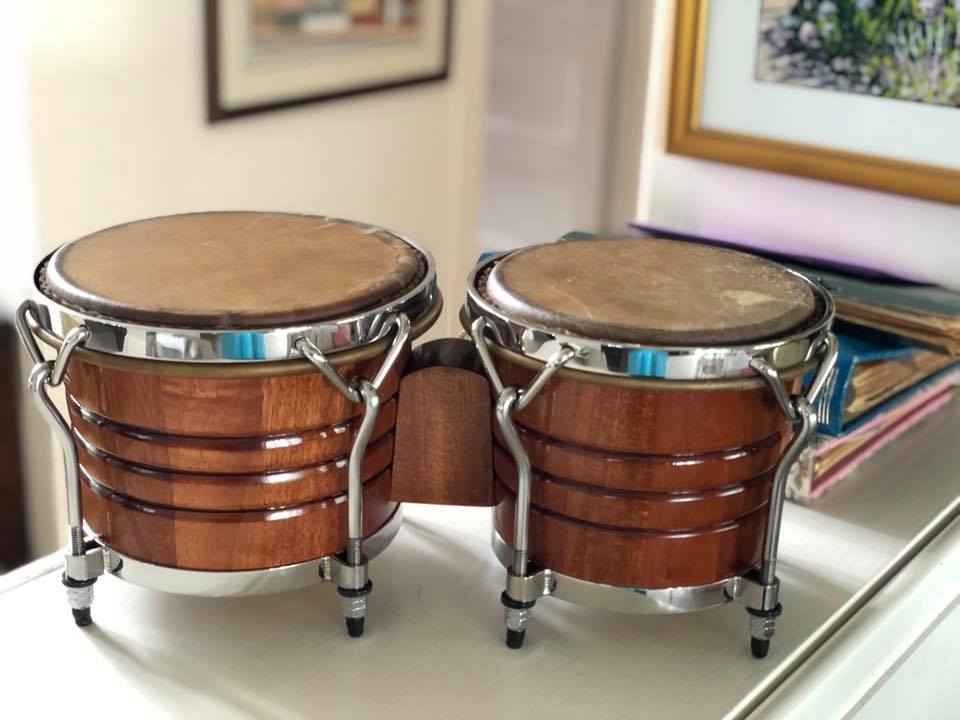
These are Sonoc Cuban bongos from Cuba. Peter Musser, of PM Percussion in Petaluma CA. completely rebuilt them. He made all new metal hardware, the center bridge and re-skinned them. He also refinished the outside. Sanded and stained. A lot of work!
Bongos, in latin styles of music especially, can be tricky as they require specific techniques like playing accents, soloing, rhythm variations, and mastering slaps.
Additionally, because they are high-pitched and lack bass, they may not provide the grounding sound necessary for beginners to feel and get into the groove of the music. Hand drums that have bass notes such as a segundo or tumba sized drum, (middle and largest in the set of 3), are essential for helping beginners connect with the rhythm—remember, drumming is about feeling the music, not just memorizing patterns.
One of my early teachers, the legendary and incredible Simbo, had a unique perspective on bongos. He believed that anything you can play on congas or other drums can also be played on bongos—a view I personally agree with despite its deviation from the norm. His concept was that they are drums, like any other drums. So why not? If you are not playing latin music in a band this makes perfect sense to me, although some traditionalists will be offended.
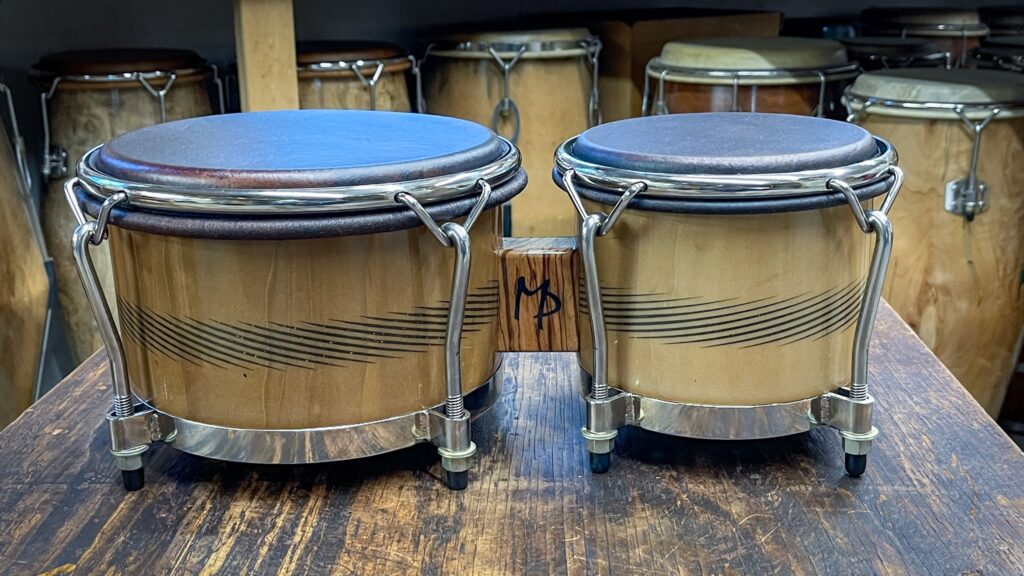
In the photo on the left are state of the art Manito Percussion solid shell poplar bongos. They are what I consider to be some of the best made bongos on the planet!
They were made with wood sourced sustainably from Athens, GA. by Ryan Manito Wendal. They feature handmade stainless steel hardware and steer skins.
They have round moderna crowns, 3/8″ heavy duty tuning lugs and weigh around 9 lbs
No matter what style of music you will choose to play, consider this. Your musical journey like building a house: a strong foundation is essential. Mastering the fundamental music concepts and then the playing techniques on the congas, clave and bell is like laying the houses foundation. And learning basic rhythms is like putting up the walls, the roof and final touches is your solo, and your bongo skills. If you don’t have a strong foundation and solid walls the roof will collapse no matter how great it is!
As you pace yourself learning to play, please remember you must learn to crawl before you can walk, and with time, you’ll be able to run with those rhythms.
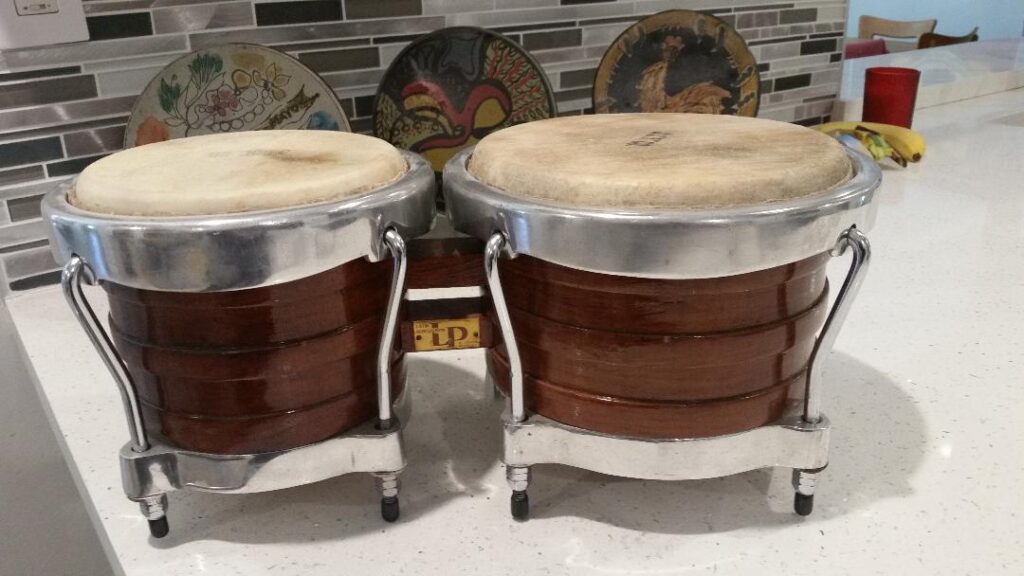
Present day photo of Dario Rosendo’s 1964 LP bongos made in Maywood, NJ by Martin Cohen’s company he formed, LP. Dario has had many LP bongos through the years, even ZEBRA wood. These are his favorites, and he has had every drum imaginable! They belonged to Eddie BONGO Brown of Pucho & The Latin Soul Brothers & Roberta Flack fame.
Now, let’s briefly touch on the history of the bongo. These instruments originated in eastern Cuba in the late 1800s and are believed to stem from larger drums known as bokú. Through the 1910s, bongos began making waves in genres like son cubano, later reaching concert halls in the U.S. by the 1930s. Although their exact origins are somewhat unclear, many believe they can be traced back to the Abakua drum trio called ‘Bonko.’
Bongo shells can be made from staves (separate pieces of wood glued together) or from solid shell, like a small log hollowed out. I prefer solid shell but really, it is hard to tell the difference in sound based on this. The skins can vary between cow, calf, horse and synthetic heads. At one time X-ray paper was popular on the macho or higher drum as well.
Bongos carry a rich cultural history, notably developing in regions like Guantanamo or Oriente in Cuba. They play a vital role in styles like changüi and son, which blend African and Spanish musical traditions, laying the groundwork for modern salsa.
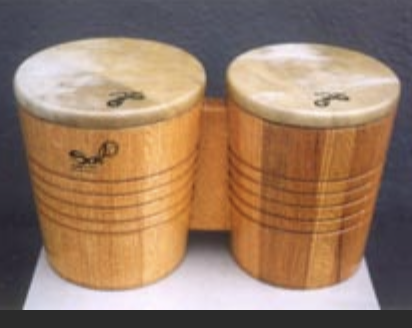
These are Changüi bongo. Some say the original style of bongo that the modern bongo came from. They are taller, larger and tuned lower and no metal hardware as you can see. These are Sol brand and were made and designed by the legendary builder Akbar!
In the 1940s and 50s in the USA, bongos became integral to the beat generation, with notable players like Jack Costanzo, known as “Mr. Bongo,” rising to fame alongside the Nat King Cole Trio. Many of us likely recall our parents picking up a set of affordable bongos for their easy playability.
I personally started playing hand drums in my early childhood—Moroccan drums made from clay, laced with leather, and devoid of metal tuning hardware. However, I am unsure whether they came before or after the Cuban bongo. I am assuming after but do not have data.

Top: Volcano Percussion made by the late Tom Alexander on the Big Island of Hawaii from local Mango wood. You can not ship the wood off of the island, only a finished product can contain Hawaiian woods.
Bottom: is a PM Percussion bongo made by Peter Musser in Petaluma California from Pepperwood found in California. Both use stainless steel as regular steel will rust!
I put in a lot of time with these small Moroccan clay drums. Just seeing the photo below brings back so many fond memories and also the sound! I had great experiences playing with friends on the beach or to albums in my room, blissfully unaware of how clueless I was about technique, music or anything else having to do with percussion. Ignorance can indeed be bliss!
I was just having straight up fun creating sound. So I get it now, when I walk up on someone or a situation where everyone is jamming away in the same manner I did, without technique, knowledge or experience but are still having the time of their lives!
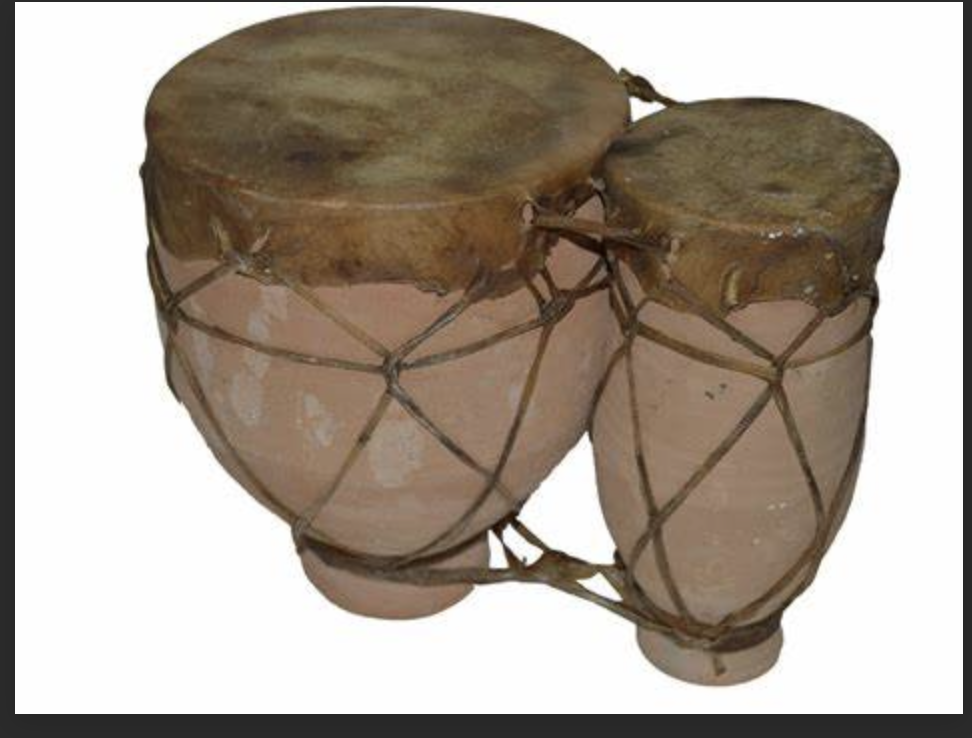
These Moroccan drums were my first drums prior to getting my Mexican tack head conga drums when I was a child. I played these for hours to records like Santana and many different percussive music recordings.
They were light weight so I could carry them anywhere on my bicycle or walking. And they fit into a back ack as well.
Most hand drums we see played in the Americas these days have deep African ties, with the bongo included. Their roots trace back to Central Africa, particularly linked to the Bantu tribes. We talked about the bongo being related to “bonko” in Abakwa. However, some ethnomusicologists believe that the term “bongo” may derive from the Bantu words ngoma or mgombo, both meaning “drum.” So your guess is as good as mine or theirs I suppose!
In Cuba’s Changüi and Son genres, the bongo serves as a star percussion instrument. Traditional Changüi features a larger, lower-tuned bongo compared to modern standards, while Son music gradually adopted the bongos we know today. Innovators like Agustín Gutiérrez “Manana” blended folk techniques into bongo drumming. I posted a set of Changüi drums above.
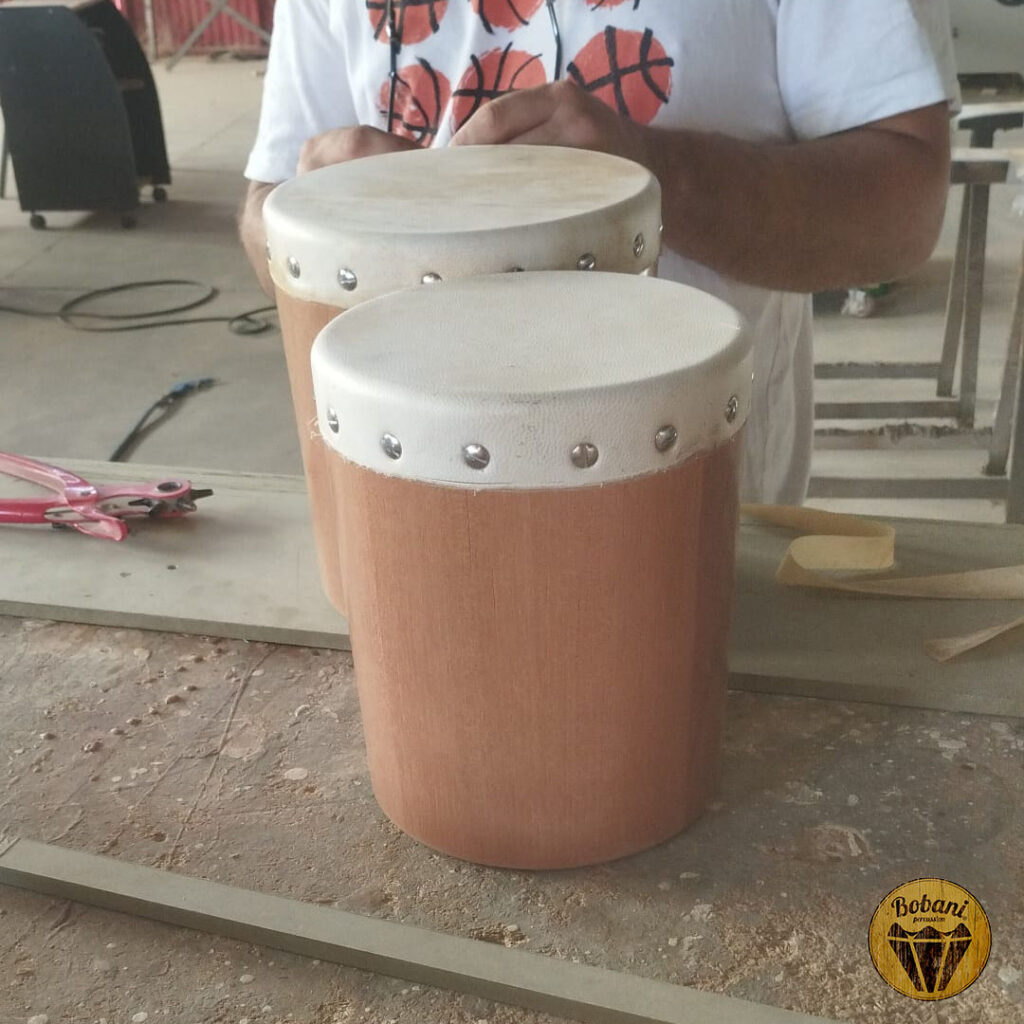
Bobani Changui Bongo.
Changüí is a style of Cuban Music which originated in the early 19th century in the eastern region of Guantánamo Province, specifically Baracoa. It arose in the sugar cane refineries and in the rural communities populated by slaves.
By the 1940s, musicians like Arsenio Rodriguez integrated congas into traditional son bands, expanding the role of bongo players and even introducing handheld cowbells during performances.
In the early 1960s, the U.S. trade embargo on Cuban goods created significant challenges for percussionists seeking authentic instruments, particularly bongos. Martin Cohen, a skilled mechanical engineer, faced this dilemma firsthand as he aspired to learn bongo playing.
Unable to find the traditional instruments he desired, Cohen decided to take matters into his own hands. Utilizing the machine shop at Bendix in New Jersey, where he was employed, he crafted his own set of bongos, fabricating the metal rims with precision. However, this innovative endeavor cost him his job, as he was promptly fired for working on what his employer deemed a personal project.
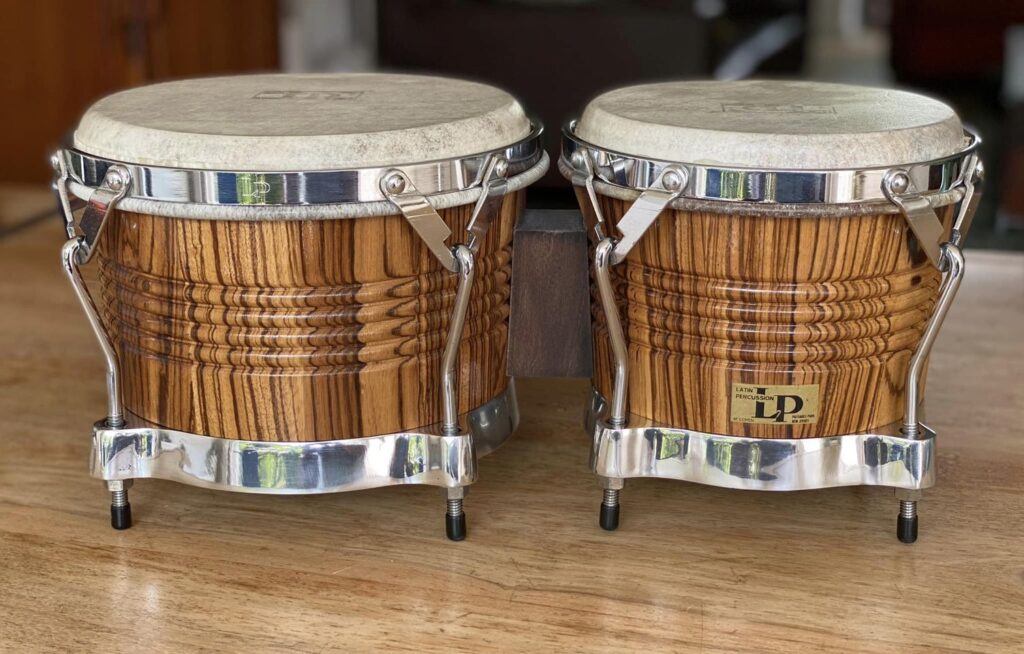
LP special Zebra wood bongos. These were made in limited amounts for special LP endorsers and are rare and highly coveted. I had a set . Sorry I sold them.
Undeterred, Cohen leveraged his engineering skills and teamed up with a local wood turner to create bongos in his garage. These handcrafted instruments quickly gained attention, and he began selling them through consignment stores, garnering a reputation for quality and craftsmanship.
His determination and ingenuity would eventually lead him to become famous for the LP bongos and congas, profoundly influencing the percussion world despite the restrictions imposed by the embargo. Thus, what began as a solution to a frustrating dilemma evolved into a successful career, affirming Cohen’s legacy in the realm of music and instrument manufacturing.
Check out our good friend Angel Rodriguez https://www.facebook.com/angelmambitorodriguez in this video below! Just click on the arrow.
So, take your time and enjoy your musical journey!

